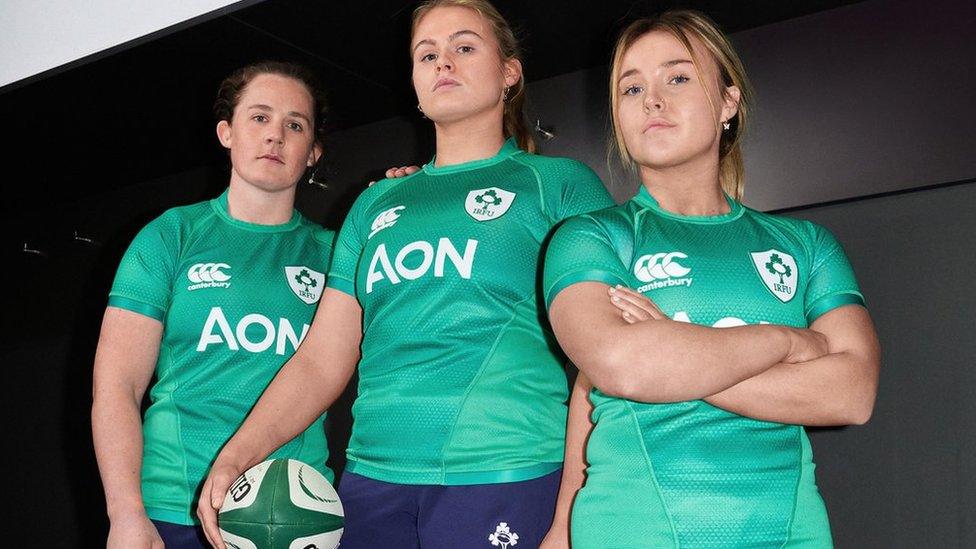Periods: Ireland team to wear navy shorts for Six Nations rugby tournament
- Published
- comments

Ireland players will wear blue shorts during the Women's Six Nations tournament
The Ireland women's rugby team are swapping their traditional white shorts and making a permanent change to navy shorts.
The move comes after discussions with players who expressed their concerns about period anxieties.
The new navy shorts will be worn for the first time by the team when they take on Wales in their opening women's Six Nations match later this month.
The squad joins a growing number of female professional and grassroot sports teams who have decided to switch from wearing white shorts.
What's happened?
WATCH: Let's Talk About Periods - A Newsround Special
By making the swap to navy shorts, Ireland will become the first of the Six Nations team to carry out the historic switch.
Ireland international Enya Breen said the change will help women at all levels of rugby feel "more comfortable on the field".
She added: "The top way to ensure we perform to our best on the field is by removing any unnecessary distractions.
"Wearing navy shorts instead of white is such a small thing, but for us it's a big step."
The Ireland rugby team join a growing list of teams in women's sport who have decided to make the change from white shorts in women's sport.
Last year, both West Bromwich Albion and Manchester City announced that they were changing their kit colour due to concerns about players' comfort on their periods.
Wimbledon also recently announced it was relaxing the tournament's longstanding strict all-white dress code and will allow female players to wear dark undershorts if they wanted.
What is a period?
WATCH: What is a period?
Period is short for menstrual period or menstruation. Periods are part of the female reproductive system.
A period happens because of changes in hormones in the body. These hormones cause ovulation, when an egg is released from one of the ovaries and also cause the lining of the uterus to build up.
If this egg is fertilised then it may go on to create a baby, and the lining of blood and tissue will support that. If it isn't fertilised, then the lining breaks down and bleeds out of the body through the vagina for a few days.
This happens roughly every 28 days and is called a menstrual period.
